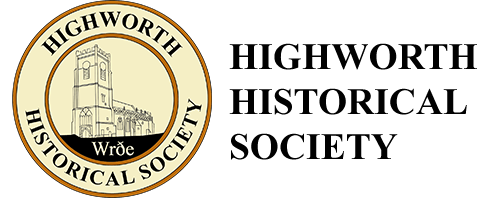Lest We Forget Continued (page 5)
Even the local police force was unaware of their existence. When joining the Unit it was necessary for each member to know every local hedge, ditch, culvert, drainage system, every inch of the local countryside, railway routes, bridges and all of this to cover a five-mile radius of one’s place of residence.
So much reliance was placed on the Auxiliary Units that supplies of the newest and most up-to-date weapons and types of materials, including the very latest explosives, were distributed to each unit before the Regular Army even received them.
Besides Coleshill House, the men from the Highworth cell were also trained at Bulford Camp, Ogbourne St George and Chiseldon. This consisted of extensive training in explosives, different forms of sabotage, map reading, unarmed combat, silent killing and also on the firing range with different types of weapons. The Highworth Unit were kept to a high level of fitness by regular intervals of extensive training, making them a highly efficient unit. Ammunition, explosives and other forms of equipment was hidden in many secluded places in and around Highworth, which included many remote buildings. One of the buildings in question was the stone building situated by the side of the road on Jack Archer‘s Market Garden in the old Station Road. After the war these were cleared up by the Royal Engineers and members of the Highworth Auxiliary Unit. Members of the Highworth Cell were Hugh Roberts, Jack Archer, and Harry Jefferies from Highworth and Les Williams from Coleshill. Two other members were given a pardon from one of His Majesties prisons, because they were both explosive experts, and it was thought at the time they would be more useful with the Auxiliary Units than serving a term in prison. Auxiliary Units were disbanded in November 1944. Most of this information has kindly been given by Jack Archer, ex Auxiliary Units, (Highworth Unit).
Lance Corporal Arthur GABBITAS who lives at Rayleigh in Essex, was called up in 1940 into the Royal Signals and trained at Catterick as a wireless operator. In May 1941 he was sent to the Auxiliary Units at Coleshill House and spent some time there while the radio stations were being constructed. He and another member of the Royal Signals had to install an efficient telephone system and offices and afterwards maintain a 24-hour service. Besides Arthur, two of his friends, Frank Hewitt and Jack Furmston, also operated the exchange to Highworth. Among the memories Arthur has of his stay in Coleshill is swimming in the river in the house grounds (Seven Steps) where the villagers had blocked the river to form a pool. They also had a football team that played on the Highworth side of the river. At one time they held a concert party in the Village Hall, in which he dressed as Hitler in a corny double act with Frank Hewitt. After Arthur Gabbitas did his initial training at Catterick he formed up with the rest of the squad at the embarkation parade when names were called out for men to be dispatched to various areas of the war. Five men were designated for Auxiliary Units and given travel warrants to Highworth, not knowing where it was, why they were going, who they were going to or what was in store for them. At Paddington they were told that there were only two trains to Highworth and that they should report to Swindon. On arriving there they telephoned Highworth Post Office for transport and they were picked up by a truck bearing the unit number 490. The driver said that he had to stop at Highworth to pick up the R.S.M. and stopped in the square. Apparently the R.S.M. had been in the pub and was quite tipsy. He had a pet whippet and whacked it with a cane as they clambered on the back of the truck. They wondered what sort of unit they were joining. After a long day of travelling from 6am they arrived at about 10 pm in the dusk and were pleased to lie down on the bunks above the stable block. Arthur remembers “Slim” Guyatt saying he was glad to have a smoke. When they awoke in the morning there were grenades on racks in the room and a “No Smoking” sign.
It was some weeks before they were told about the resistance. The radio network was still being set up and Arthur was kept at Coleshill until the middle of 1942 before going to Hunton for six weeks training on wireless sets. Then he was sent to Winchester in September 1942, moving to Buckland St. Mary in 1943 and later to Lincoln where he remained until stand down in 1944. He then went back to Catterick for training as an instructor and was retained until demobilised in July 1946.
When he went to Coleshill in June 1941 there was a stone surround in the stable yard near the pump in which they stored ammunition and he had to camouflage it. Later it was filled with water in case of fire.
There were two huts in the stable yard, one for meals and one for staff sleeping. The stables on the long side were used for sleeping by the Home Guard units on training at weekends and the NAAFI was behind the double doors in the corner, with offices and telephone room above. Later, when the signals closed their HQ at Hundon in Suffolk, they moved to Coleshill. Nissen huts were erected in the woods to the left of the entrance, for sleeping and also maintenance of wireless sets. The guardhouse was the cottage at the end of the stable block next to the gateway on the road, facing the side of the main house.
One day when Arthur and his mates were having dinner they heard a fighter plane (Spitfire) in trouble and then “crash”! They discovered it across the road in a field near the ammo dump. It was still intact with the instruments still whirring. The pilot was dead nearby. He had either jumped or been thrown out as there was a clear indentation in the ground next to him. Arthur remembers his bright ginger hair more than fifty years later.
When Coleshill House was taken over by the government, to be used as the main base for training the secret resistance organisations, the quiet life of the villager changed dramatically. Army vehicles could be seen about the village, with the approaches to the big house being guarded day and night.
Geoff and Joyce Wright who lived in the top lodge of Coleshill House at that time said until the guards got to know them they often had difficulty getting into their own home. Just outside their front door was a large guard post, reinforced with sand bags which was a constant reminder to them that there was a war on. The drive leading to Coleshill house was strictly out of bounds, this led to the top park where several army huts were situated amongst the trees. From time to time there were also tents erected.
Once or twice the quiet of the village was shattered by German H.E. bombs which were dropped near Raglands wood opposite the turning to Fresden Lane and also near the old stone quarry on the Faringdon side of Coleshill.
During one Monday lunch time, when Joyce Wright was hanging out washing on the clothes line near the asparagus beds in the kitchen garden, a German aircraft appeared from nowhere and started firing. She could hear the bullets thudding into the ground and then the glass of the peach houses started to shatter. Within seconds it was all over. Her father-in-law, Mr George Wright, who had worked in the gardens for many years, had been working in the peach houses for most of the morning and had just left for his dinner break. It was thought at the time that he had been within minutes of serious injury, or even death. It is believed that the German plane then carried on following Fresden Lane where he fired at Olly Ely of Highworth who was exercising a valuable horse which belonged to Mr Cockran of Fresden Manor House.


